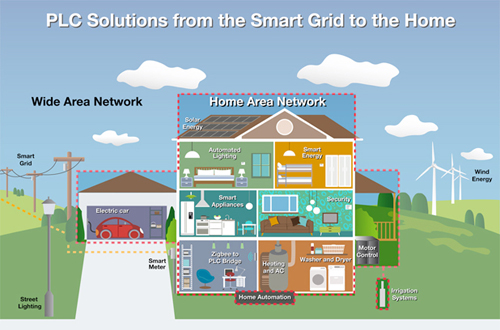Redeeming the once-was-smart grid


Style Leaders: While Italy has lost its early lead in installed base, its smart meters are still streets ahead style-wise. image Enel Distribuzione SpA
Once, it was internationally award-winning. Specifically, New Zealand’s national electricity grid was feted for its sophisticated wireless telecommunications control system that facilitated load balancing and real time response to operational anomalies—smart, in anybody’s language.
Smart as was, it would not have met today’s definition of smart grid. A grid is not considered smart unless it interacts with consumers prepared to work with the suppliers in real time to hold down peak demand. Nor smart unless it can purchase power from homes, farms and factories willing to install their own generating capacity.
The smart meter is the interface between the smart grid and the smart consumer, potentially. Shamefully, the more than 150 000 smart meters installed in Aotearoa are brain dead, at least to the consumer. The meters should allow consumers to save money by reducing their contribution to peak load. Instead, the information flows one way only—to the supplier, for example to expedite disconnections for tardy payment.
Sweden, meanwhile, has achieved 100% rollout, overtaking Italy’s impressive early lead. Swedish consumers will soon reap the rewards of hourly meter reading, including by rewarding wind generators by consuming cheap power when the local turbines are turning.
Although Aotearoa’s national grid was the epitome of modernity, like much of the infrastructure that defined developed countries, it was not a model that a planet of 10 billion people could aspire to. National grid pioneers were far from oblivious to the costs of rolling out fully featured infrastructure to every last corner of a country. New Zealander engineer Lloyd Mandeno developed an economic single-line system for electrifying rural areas, in the 1920s—Nikola Tesla had lectured on the principal in 1891. Commonly referred to as swer—single wire earth return—Wikipedia states:
More than 200 000 kilometres have now been installed in Australia and New Zealand.
Although electric power is as essential to civilised life as are roads, railway lines and piped water, a quarter of the world’s population are without it. It would be fitting if the installation of single wire systems became the high-profile cornerstone of Aotearoa’s foreign aid programme. Particularly if it were smart incarnation of single-line technology that incorporated power line communication. An Australian study is encouraging:
This work could conceivably lead to technologies to reduce the incidence of bush fires begun by poorly maintained power wires, by continuously monitoring for anomalies. In aftermath of the Black Saturday disaster, replacement of Victoria’s single line systems was called for. But at cost of AU$20 billion, it is likely to be limited to areas of extreme fire risk.

Beyond Fibre: The $300 million set aside for rural fibre is going to leave many farms without broadband, unless existing power lines are pressed into service to also carry data. image Texas Instruments
Power line communication is well known to New Zealanders, as ripple control. The science underpinning the smart meter was understood by the late 1800s, with the first application dating from 1913. It was introduced to Aotearoa in 1949, by the Waitematā Electric Power Board—a smarter grid had been called for to cope with peak demands being exacerbated by the world’s most profligate users of electrically-heated water—a trend that was precipitated by Mandeno’s patented hot water cylinder. Mandeno’s load control solution was the elegantly simple expedient of a two-way switch above the stove—when stove was on, the water heater wasn’t.
The potential for transmitting data via power lines remains largely untapped. This is mostly due to the strictly siloed power and communications sectors. Presumably the historic separation of power and phone infrastructures entrenched the popular intuition that power and data don’t mix hasn’t helped—about as preposterous as using the same pipe for sewage and drinking water.
Following the fall of the Berlin Wall, free marketeers had free reign—the disintegration of the Soviet Union was all the proof needed that the unfettered market would roll out the American Dream for all. Painfully slowly, the Great Recession is beginning to wake the world to the need for collective democratic decision‑making, to ensure the world’s salvation—rather than rely on a free‑market god.
Free market dogma is the singular impediment to smart grid implementation. Free marketeers treat infrastructure as something that exists primarily to serve vigorously competing business. Smart grid designers, on the other hand, simply crave to build efficient infrastructure, which can serve then all interests public and private.
Australia and Aotearoa share a strong love for, and commitment to, the bush—the remote places. It makes the countries perfect partners in jointly developing low-cost smart grid technologies to serve such areas, and the developing world generally. But the benefit of having the world’s preeminent advisor on smart networks on hand is not helping Australia to the extent it should, much less Aotearoa. Paul Budde briefs President Obama’s energy minister, joint Nobel Prize winner physicist Dr Stephen Chu, but is frustrated by the siloed sector response that persists, despite him enjoying prime minister Kevin Rudd’s ear:
The national electricity grid reached its zenith with the completion of the world-leading high-voltage, direct-current Cook Strait cables. This project was not for the fainthearted and weathered persistent opposition, before finally going live in 1965. Although the submarine power cable was described then as the longest in the western world, at 40 kilometres it is eclipsed by some of today’s—the 580‑kilometre North Sea cable, which allows Norwegian hydro power to flow south to supply Dutch daytime peak loading, and surplus Dutch off-peak thermal power to flow north overnight.
Possessing a world-leading national grid left Aotearoa perfectly poised to develop a world-leading smart grid. Tragically, however, rather than continuous improvement, control was grabbed by free market ideologues who proceeded to package up and flog off the family silver.
The notion that it could be improved by carving it into competing pieces demonstrated an abject ignorance by perpetrator Max Bradford of what the network’s function.
Max Bradford’s contribution to nation building is about as impressive as that other high-profile treasury export, Don Brash. Neither let their ignorance of the real world dispel the confidence gained from having had their hands on, or near, the money levers. There is a total lack of evidence that individual self-interested entities, unregulated, can evolve sophisticated, much less sustainable, systems. It is as though having finally understood that evolution works other-than by design, that design is no longer necessary. Even Pope Benedict XVI acknowledges that Antonio Gaudí, not a deity, designed the Sagrada Familia.
The quickest way to recover the time lost by Bradford’s blundering deregulation and privatisation, and probably the cheapest in the long run, is to nationalise and regulate—regulation, of course, is reason all Swedish consumers now have smart meters.
Having failed spectacularly, the great global free market experiment now needs to be replaced by an expanded democracy, rather than a marginalised form of governance good only for bailing out failed finance companies. Capitalists need not be overly fearful—there are invariably plenty of rich pickings for those obsessed with amassing money. The immediate need is to rapidly phase out fossil fuel, and that means using more electricity, and more costly electricity. Given that the cost of energy service has a profound impact on the cost of almost everything, it is imperative that not only is electricity fossil-free, but also efficiently generated, distributed and consumed.
Perhaps the largest lost opportunity that can be sheeted home to the dismantlers of the superb national grid was power line communications. Not only are the islands of Aotearoa elongated, but many parts are only sparsely settled. Despite this, it was a point of pride of the New Zealand Electricity Department that all but the remotest farm was supplied with high-grade power. To that could have been added broadband, long since.
Long-term, the United States subprime mortgage market implosion will be seen for what it was: The wheels falling off a civilisation hell-bent on living beyond the world’s natural resources. Spending $1.5 billion on fibre is exactly what the government should be doing, even if the scheme is more about helping business than the nation. Spending $1.6 or $2.3 billion on a commuter–holiday highway is exactly what the government should not be planning. Bizarrley, the same government minister, Steven Joyce, is responsible for the good, and for the bad and the ugly. If, as rumours predict, the minister stands for the Rodney Electorate, alternatives to a global-warming motorway through the catchment will receive some much-needed Mahurangi attention.
Free-market forces cannot mastermind civilisation’s redemption. Churchillian men and women democratically supported by an informed and determined public can.
Gaudí, Mandeno and Tesla didn’t devote their brilliance to glorifying Mammon, but to improving the family of man.
Footnote The editor was delivered by Lloyd Mandeno’s son, legendary surgeon-superintendent of Te Kūiti Hospital Dr John Mandeno qso. Dr Mandeno blasted the 1990s health ‘reforms’ and emphasis on cost‑cutting, profit‑making and competition:
The inevitable result was the disastrous litany of failures in hospital care.
Dr Mandeno’s 80 000 kilometres of voyaging in the Rererangi, which he built himself, included a solo circumnavigation of Aotearoa.
